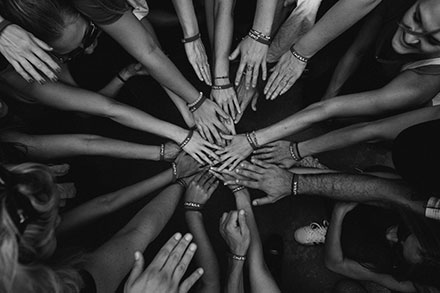Confessions of a former DEI skeptic

People are often surprised to learn that I haven’t always supported corporate diversity, equity, and inclusion (DEI) initiatives. After all, I’m a Black woman from Jamaica who works in human resources. But I used to be a skeptic. I didn’t understand systemic discrimination and thought hard work alone was the great equalizer. I believed it was better to “pull yourself up by your bootstraps” without any consideration for a person’s background.
I believed this even after my first experience of discrimination when I moved to the United States for college. It was here that I first encountered bias, when some assumed that the education I’d received in Jamaica was somehow less rigorous. Knowing this to be untrue, I disregarded it, persevered, and returned to Jamaica with my degree to launch my HR career.
Encountering systemic bias
I soon returned to the U.S. to expand my horizons—but once again, my experience was undervalued. Job offers were elusive, and it didn’t go unnoticed that the faces I saw in positions of power did not look like mine. I began applying for positions below my skill level to gain a foothold in corporate America. When I got a job, I congratulated myself on outsmarting the system—by strategically getting a foot in the door with quick plans to move up within the organization—instead of asking why I had to do that.
When a recruiter position opened up, I approached the head of HR and pitched myself. I simply didn’t know not to ask. I left our conversation with the promotion and a question that remained with me for years: Why didn’t others who looked like me advocate for themselves in the same way?
Seeing how systems and structures can favor some and disadvantage others
Growing up in a predominantly Black country, surrounded by successful, multifaceted people who looked like me, self-advocacy felt instinctive. In the U.S., I was reduced to a single label: Black. Or, perhaps, Black woman. I began to grasp the complexities of the Black American experience and, in turn, the struggles other underrepresented communities faced.
As my career progressed, I discovered that many individuals from underrepresented groups—people of color, women, people with disabilities, members of the LGBTQIA+ community, and others—hesitated to speak up for their needs at work. Once, a manager told me he wasn’t interested in candidates from “Wisconsin Community College”—meaning he didn’t want someone who hadn’t gone somewhere prestigious, ruling out capable individuals who couldn’t afford a fancy school or had been overlooked in admissions due to systemic racism.
Another head of the HR department once raved about a recruitment process that favored Ivy League graduates. In a meeting, I asked about recruiting from City University of New York (CUNY) schools. They responded that they needed people who could write well, so they hadn’t recruited CUNY students. It was a clear class bias. I clenched my teeth and traded a look with my manager. We were both CUNY graduates.
I began to see how systems and structures were designed to favor some and disadvantage others. I saw, at last, how essential DEI is to expanding opportunity and access in a profoundly unequal society.
Analyzing measures of systemic biases
My personal encounters with racism were mere glimpses of a bigger picture about the need for DEI initiatives. There are more objective measures that tell a story of systemic biases that anecdotes alone can’t. For example, we should be curious when the turnover rate for people of color is consistently higher than their representation as a percentage of the staff or when employee satisfaction scores consistently skew higher for one racial group.
And we should examine the stories behind those numbers. A few years ago at the Ford Foundation, where I serve as vice president and chief people officer, we faced a perplexing situation: In an internal survey, some women reported feeling unsupported in their career development despite making up most of our staff and being promoted at rates comparable to their representation within the organization. Where was the disconnect? We listened to them and discovered they lacked career guidance and mentorship. We then developed a program to empower staff with the necessary tools and support.
Improving systems and structures to create inclusive environments
What we learned reflects a fundamental principle of DEI: Representation alone is insufficient. Creating inclusive environments and a workplace culture where employees feel valued is essential for operational excellence. It has been proven repeatedly that unhappy, excluded employees don’t bring their best selves to work, diminishing their productivity and creativity.
Over time, I’ve learned that another fundamental tenet of DEI is improving systems and structures to remove problematic practices at an institutional level, not just redressing individual harms. When I was Ford’s director of human resources, we identified an opportunity to address potential biases in the annual merit increase process by integrating compensation equity reviews. We established clear, objective criteria to address racial and gender disparities in movement through the salary ranges. Our initiative worked and resulted in more equitable compensation practices.
DEI programs are essential to addressing the systemic inequalities that prevent individuals from having fair access to opportunities, leveraging their skills, and reaching their potential. DEI is not about taking away opportunities from anyone; it’s about widening opportunities for everyone. It’s about building a future where everyone can thrive.
Photo credit: Kate_sept2004 via Getty Images






